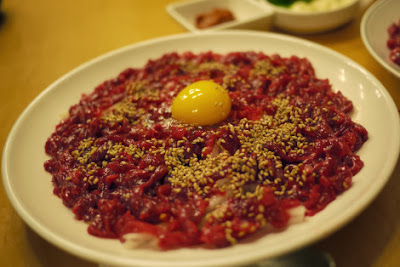1. No tipping
When you visit Korean restaurants, you might be surprised If you're from the western countries. In Korea, tipping is not required nor is it even expected. Even though we don't have tipping culture, the customer service in Seoul is unparalleled, and most staff works diligently to cater food to customer.
2. Using Wifi and calling freely in the public transportation.
We freely call someone and send messages in the public transportation. When I stayed in Toronto, Canada, I couldn't use my cellphone in the subway. We don't have any problem to use the smartphone in the subway. In addition, from subways to buses provide people with free access to Wifi, so the people who have a smartphone usually search the internet or use SNS service like Facebook and Twitter in the public transportation.
 |
| Source : http://blog.naver.com/PostView.nhn?blogId=shinsuper&logNo=50136580671 |
3. Drinking outside
In Korea, we can drink alcohol outdoors like parks and school campuses. If you visit the campus of Korean universities on a sunny days, you can see the students in group who drink alcohol on a lawn in the campus. Han river is a popular outdoor place for drinking beer with chicken. Especially in Summer, many people enjoy drinking beer with their friends and family sitting on the ground next to the river.
4. Korean dry sauna, Jjimjilbang
A Jjimjilbang is a large, gender-segregated public bathhouse in Korea, furnished with hot tubs, showers, Korean traditional kiln saunas and massage tables. There are unisex areas with a snack bar, ondol-heated floor for lounging and sleeping, wide-screen TVs, exercise rooms, ice rooms, heated salt rooms, the room for using computers, karaoke, and sleeping quarters with either bunk beds or sleeping mats. It has various rooms with different temperatures to suit guests' preferred relaxing temperatures. Most jjimjilbangs are open 24 hours and are a popular weekend getaway for Korean families.
 |
| Source : http://heraldk.com/article.php?id=18360 |
5. Lots of stores that open 24 hours
There are lots of stores and pubs that operate overnight. You can buy snacks, foods, household items, even alcohol anytime. Moreover, there are many pubs that you can enjoy drinking alcohol, and clubs you can dance all night long.
 |
| Source : http://chunsk71.blogspot.kr/2010/09/blog-post.html |
Reference : http://en.wikipedia.org/wiki/Jjimjilbang










.jpg)



































